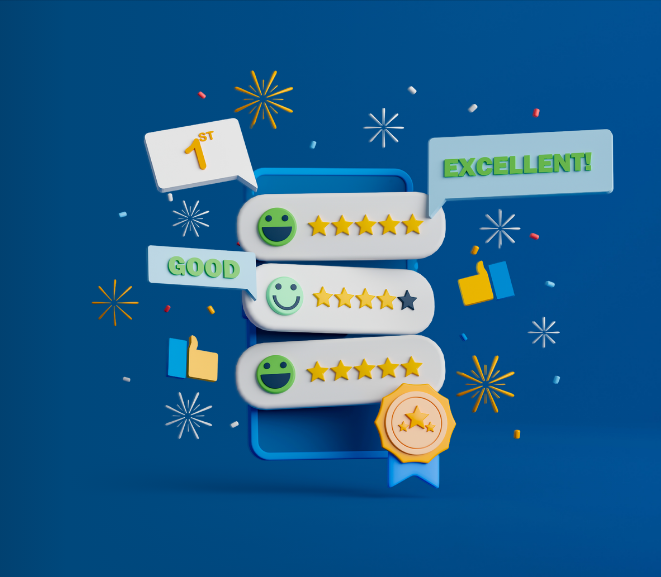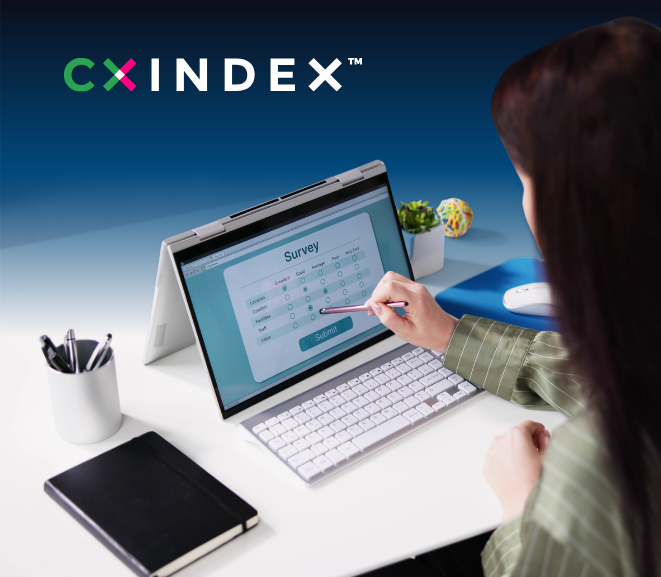The Pros and Cons
of the Most Popular Survey Channels
A critical component of a good VoC programme, like any part of customer experience, is meeting your customers on their preferred channel. In this post we give a broad overview of the benefits and drawbacks of the three most popular survey channels. The digital channel itself could be divided into numerous sub-categories; when you look at the vast array of options available within this channel, e.g. email, chat, web, in-app, WhatsApp, and other social channels, you could do a much deeper analysis, however, in this post, we will focus our attention more on the digital medium rather than specific category of digital channel.
The Pros and Cons of the Most Popular Survey Channels

Our customers' most popular survey channels are Voice, Digital and SMS. Voice has been the most popular channel for our customers; but we have seen a continued increase in the prevalence of feedback based on bot interactions in the last couple of years, and with the rise of AI, that trend will continue into 2025 and beyond.

By integrating data from all channels, companies can conduct in-depth analyses to reveal insights and patterns that might be overlooked. Ultimately, this fosters a flexible, responsive, and customer-centric approach that increases response rates and enhances satisfaction and loyalty.

Surveys
Pros of IVR Surveys
High Interaction Point:IVR is a popular channel because it seamlessly integrates into the customer journey, capturing feedback immediately after interactions when impressions are fresh.
Opportunity to transcribe comments:
By transcribing remarks and then using AI to analyse the data, you can quickly go beyond standard metrics and get to the core of customer issues, concerns and suggestions.
Easy Implementation:
Setting up post-call IVR surveys is straightforward, making it a hassle-free option for businesses looking to gather customer feedback quickly.
Performance Tracking:
IVR surveys effectively track performance metrics such as Customer Satisfaction (CSAT) and Net Promoter Score (NPS) at an agent level, offering valuable insights into individual and team performance.
Immediate Survey Delivery:
No additional data from the customer is necessary since the survey prompt occurs during or immediately after the call ends, ensuring a smooth transition for participants.
Cons of IVR Surveys
While remaining the most popular channel, there can be drawbacks with IVR surveys:User Frustration:
Some customers find navigating IVR systems frustrating or confusing, especially if the menu options are not transparent or intuitive, leading to incomplete surveys or inaccurate data.
Impersonal Experience:
The automated nature of IVR surveys can feel impersonal, potentially affecting customer satisfaction and their willingness to engage honestly with the survey.
Limited Question Types:
If you are not using transcription, a potent tool, the format can restrict the types of questions that can be asked, typically mainly favouring yes/no or numeric rating questions.
Accessibility Issues:
Customers with specific disabilities or impairments, such as hearing difficulties, might find it challenging to engage with an IVR system, leading to the exclusion of their feedback.
While in-call IVR surveys can efficiently gather feedback, especially for large volumes of calls, these surveys need to be carefully designed and implemented to mitigate these potential drawbacks.
Pros of Digital Surveys:
road Reach and Accessibility:Digital surveys can reach a broad audience across multiple platforms, making them accessible to customers wherever they prefer to communicate.
Cost-Effectiveness:
Digital surveys are generally more cost-efficient than voice or SMS surveys because they require less manual intervention and can be automated.
Convenience:
Customers can respond at their convenience, which can increase the likelihood of participation and completion rates.
Rapid Data Collection and Analysis:
Responses can be collected and analysed almost in real time, allowing companies to quickly identify trends and areas for improvement.
Personalization and Customization:
Surveys can be easily customized to target specific segments of your customer base, allowing for personalized interactions based on their previous behaviour or preferences.
Integration with Analytics Tools:
Digital platforms often integrate with analytics tools, providing robust data analysis capabilities and enabling businesses to gain deeper insights.
Multi-Modal Feedback:
Digital surveys can include different types of questions, such as multiple-choice, ratings, open-ended, and multimedia inputs, enabling richer feedback collection.
Cons of Digital Surveys:
Survey Fatigue:Customers often receive numerous digital surveys, leading to fatigue and potentially lower response rates.
Spam Filters:
Without the necessary precautions, Email surveys, for example, can be caught in spam filters or ignored, reducing their effectiveness.
Participation Bias:
Not all customers are equally active on all platforms, which can lead to bias if specific segments of your audience are overrepresented or underrepresented in the feedback.
Lack of Depth in Responses:
Digital formats might encourage brief or less thoughtful responses compared to other methods, particularly if there is poor survey design and the interfaces aren’t user-friendly.
Overall, digital surveys are a versatile tool for contact centers, but they require careful planning and execution to address potential challenges and maximize their effectiveness in capturing customer insights.
Pros of SMS Surveys
Optionality:You can elect to have back and forth ping pong surveys, sometimes incorporating AI in the the responses, or embed a digital links into the Message, given that 90% of phones are smartphones and global smartphone penetration continues to rise.
High Open Rates:
SMS boasts a very high open rate, often near 98%, ensuring that your surveys are almost always seen by recipients.
Broad Reach:
SMS surveys are accessible to anyone with a mobile phone and do not require an internet connection, which broadens the potential respondent pool and includes those in areas with limited internet access.
Concise Communication:
The character limit in SMS requires questions to be concise, which can be beneficial in collecting clear and focused responses quickly.
Easy Automation:
SMS can be integrated into automated systems to trigger surveys after specific customer interactions, making the process seamless and efficient.
High Engagement:
Many users regard texting as a personal communication channel, which can lead to higher engagement and more genuine responses than some other survey methods.
Cons of SMS Surveys
Character Limitations:The inherent character limit in SMS means survey questions must be very concise, which can restrict the depth of information collected.
Cost Considerations:
Depending on the survey's scale and the number of messages sent, costs can accumulate, particularly if the survey includes multimedia elements such as MMS.
Privacy Concerns:
Collecting survey responses via SMS may raise privacy concerns among users, necessitating clear communication about the data collection process and how it will be used.
Opt-In Requirement:
To comply with regulations like the Telephone Consumer Protection Act (TCPA) in the U.S., businesses must have explicit consent from recipients to send SMS surveys, which can limit outreach.
Tech Literacy Variability:
While SMS is widely used, tech literacy can vary, and not all audiences may feel comfortable engaging with SMS surveys.
Response Fatigue:
Just like email surveys, frequent SMS surveys can lead to response fatigue, potentially causing lower engagement over time.
Surveys
Pros of IVR Surveys
High Interaction Point:IVR is a popular channel because it seamlessly integrates into the customer journey, capturing feedback immediately after interactions when impressions are fresh.
Opportunity to transcribe comments:
By transcribing remarks and then using AI to analyse the data, you can quickly go beyond standard metrics and get to the core of customer issues, concerns and suggestions.
Easy Implementation:
Setting up post-call IVR surveys is straightforward, making it a hassle-free option for businesses looking to gather customer feedback quickly.
Performance Tracking:
IVR surveys effectively track performance metrics such as Customer Satisfaction (CSAT) and Net Promoter Score (NPS) at an agent level, offering valuable insights into individual and team performance.
Immediate Survey Delivery:
No additional data from the customer is necessary since the survey prompt occurs during or immediately after the call ends, ensuring a smooth transition for participants.
Cons of IVR Surveys
While remaining the most popular channel, there can be drawbacks with IVR surveys:User Frustration:
Some customers find navigating IVR systems frustrating or confusing, especially if the menu options are not transparent or intuitive, leading to incomplete surveys or inaccurate data.
Impersonal Experience:
The automated nature of IVR surveys can feel impersonal, potentially affecting customer satisfaction and their willingness to engage honestly with the survey.
Limited Question Types:
If you are not using transcription, a potent tool, the format can restrict the types of questions that can be asked, typically mainly favouring yes/no or numeric rating questions.
Accessibility Issues:
Customers with specific disabilities or impairments, such as hearing difficulties, might find it challenging to engage with an IVR system, leading to the exclusion of their feedback.
While in-call IVR surveys can efficiently gather feedback, especially for large volumes of calls, these surveys need to be carefully designed and implemented to mitigate these potential drawbacks.
Pros of Digital Surveys:
road Reach and Accessibility:Digital surveys can reach a broad audience across multiple platforms, making them accessible to customers wherever they prefer to communicate.
Cost-Effectiveness:
Digital surveys are generally more cost-efficient than voice or SMS surveys because they require less manual intervention and can be automated.
Convenience:
Customers can respond at their convenience, which can increase the likelihood of participation and completion rates.
Rapid Data Collection and Analysis:
Responses can be collected and analysed almost in real time, allowing companies to quickly identify trends and areas for improvement.
Personalization and Customization:
Surveys can be easily customized to target specific segments of your customer base, allowing for personalized interactions based on their previous behaviour or preferences.
Integration with Analytics Tools:
Digital platforms often integrate with analytics tools, providing robust data analysis capabilities and enabling businesses to gain deeper insights.
Multi-Modal Feedback:
Digital surveys can include different types of questions, such as multiple-choice, ratings, open-ended, and multimedia inputs, enabling richer feedback collection.
Cons of Digital Surveys:
Survey Fatigue:Customers often receive numerous digital surveys, leading to fatigue and potentially lower response rates.
Spam Filters:
Without the necessary precautions, Email surveys, for example, can be caught in spam filters or ignored, reducing their effectiveness.
Participation Bias:
Not all customers are equally active on all platforms, which can lead to bias if specific segments of your audience are overrepresented or underrepresented in the feedback.
Lack of Depth in Responses:
Digital formats might encourage brief or less thoughtful responses compared to other methods, particularly if there is poor survey design and the interfaces aren’t user-friendly.
Overall, digital surveys are a versatile tool for contact centers, but they require careful planning and execution to address potential challenges and maximize their effectiveness in capturing customer insights.
Pros of SMS Surveys
Optionality:You can elect to have back and forth ping pong surveys, sometimes incorporating AI in the the responses, or embed a digital links into the Message, given that 90% of phones are smartphones and global smartphone penetration continues to rise.
High Open Rates:
SMS boasts a very high open rate, often near 98%, ensuring that your surveys are almost always seen by recipients.
Broad Reach:
SMS surveys are accessible to anyone with a mobile phone and do not require an internet connection, which broadens the potential respondent pool and includes those in areas with limited internet access.
Concise Communication:
The character limit in SMS requires questions to be concise, which can be beneficial in collecting clear and focused responses quickly.
Easy Automation:
SMS can be integrated into automated systems to trigger surveys after specific customer interactions, making the process seamless and efficient.
High Engagement:
Many users regard texting as a personal communication channel, which can lead to higher engagement and more genuine responses than some other survey methods.
Cons of SMS Surveys
Character Limitations:The inherent character limit in SMS means survey questions must be very concise, which can restrict the depth of information collected.
Cost Considerations:
Depending on the survey's scale and the number of messages sent, costs can accumulate, particularly if the survey includes multimedia elements such as MMS.
Privacy Concerns:
Collecting survey responses via SMS may raise privacy concerns among users, necessitating clear communication about the data collection process and how it will be used.
Opt-In Requirement:
To comply with regulations like the Telephone Consumer Protection Act (TCPA) in the U.S., businesses must have explicit consent from recipients to send SMS surveys, which can limit outreach.
Tech Literacy Variability:
While SMS is widely used, tech literacy can vary, and not all audiences may feel comfortable engaging with SMS surveys.
Response Fatigue:
Just like email surveys, frequent SMS surveys can lead to response fatigue, potentially causing lower engagement over time.





